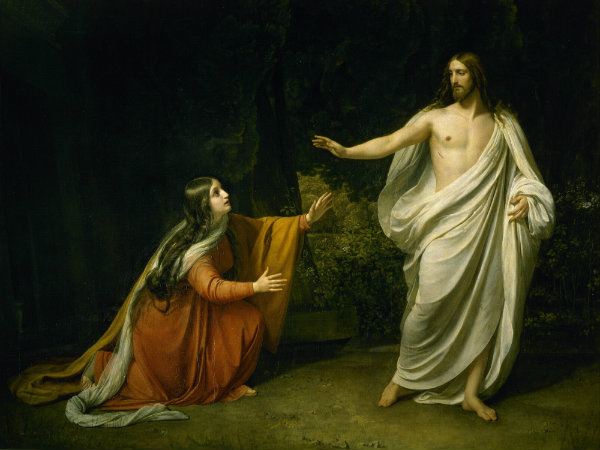Did Jesus marry Mary Magdalene and have children? Although the Bible portrays Jesus as a single man, the idea that he may have had an earthly family continues to be a perennial favourite spawning numerous fictional works such as bestseller The DaVinci Code and The Last Temptation of Christ, both of which were popular enough to be turned into Hollywood films.
Now the authors of a new book, The Lost Gospel, claim to have uncovered real evidence that the marriage did indeed take place, and that Jesus had two sons, Manasseh and Ephraim, the Daily Mail has reported.
The book draws its conclusions from a text found in the British Library, where it has lain for 20 years after the British Museum moved it there. It was bought in 1847 from a dealer who claimed to have bought the manuscript, a Syriac text written on vellum, from the St Macarius Monastery in Egypt.
Despite previously being thought of as an unremarkable document by the few academics who had thought to study the text, Simcha Jacobovici, an Israeli-Canadian film-maker, and Barrie Wilson, a professor of religious studies in Toronto, have spent the last six years poring over the passages.
What they claim to have found reads like a sensationalist fictional bestseller or Hollywood plot itself. The blurb to their book fanfares: “The Lost Gospel takes the reader on an exciting historical adventure through this highly informative ancient manuscript.
“The authors were easily able to decode the basic symbolism, but what the authors eventually discovered is as surprising as it ground-breaking: the confirmation of Jesus’ marriage to Mary Magdalene; the names of their two children; the towering presence of Mary Magdalene (who was a Gentile priestess), a serious plot on Jesus’ life in 19 C.E. prior to the crucifixion; an assassination plot against their children; Jesus’ connection to political figures at the highest level of the Roman Empire—Emperor Tiberius and his protégé Sejanus; and a religious movement that antedates that of Paul—the Church of Mary Magdalene.”
Jacobovici is convinced that the manuscript is a sixth century version of a first century, 29 chapter long gospel, written to sit alongside the traditional books of Matthew, Mark, Luke and John. He claims that it tells the story of Jesus and Mary’s marriage through the allegorical story of Joseph and Aseneth, two Old Testament characters. Although there have been Latin and Greek tellings of their story, Jacobovici insists that, by returning to the Syriac version, it is possible to decode the hidden message.
The claim hinges on a passage which tells of the couple’s marriage ceremony itself, which is officiated over by no less a person than the Pharaoh of Egypt who said to Aseneth “Blessed are you by the Lord God of Joseph, because he is the first-born of God, and you will be called the Daughter of God Most High and the bride of Joseph now and for ever.”
Later it reveals that “Joseph had intercourse with Aseneth . . . And Aseneth conceived from Joseph and gave birth to Manasseh and his brother Ephraim in Joseph’s house.”
As for why the story has never come to light before, the authors of the book explain that the Roman Emperor Constantine, who converted to Christianity in the fourth century, ordered all other gospels to be destroyed in order to manufacture and propagate his own version of Christianity.
But not everyone is convinced. Commenting on the publisher’s blurb, Mark Goodacre, Professor of New Testament and Christian Origins as Duke University said: “If there are some grounds for caution, one might see them in the idea that this work will provide “the confirmation of Jesus’ marriage to Mary Magdalene”.
“Since there are no ancient sources that speak of Jesus’ marriage to Mary Magdalene, it is not clear at this stage how a newly discovered work could provide “confirmation” of this. The note that she is a “Gentile priestess” is curious and, one would have thought, makes it unlikely that the work goes back to the first century, so too the idea that they had two named children.”
The idea that Jesus may have been married continues to excite as it raises timely questions about the role of women in the church. Last year Harvard Professor Karen L King unveiled a tiny document, about the size of a business card, written in ink on papyrus, which has been dubbed “The Gospel of Jesus’s Wife”. Carbon dating of the papyrus placed the origin of the document within eighth century Egypt.
Although King has not sought to claim that her finding proved Jesus was married, she told an interviewer “I’m basically hoping that we can move past the issue of forgery to questions about the significance of this fragment for the history of Christianity, for thinking about questions like, ‘Why does Jesus being married, or not, even matter? Why is it that people had such an incredible reaction to this?’ ”

COMMENTS
Please let us know if you're having issues with commenting.